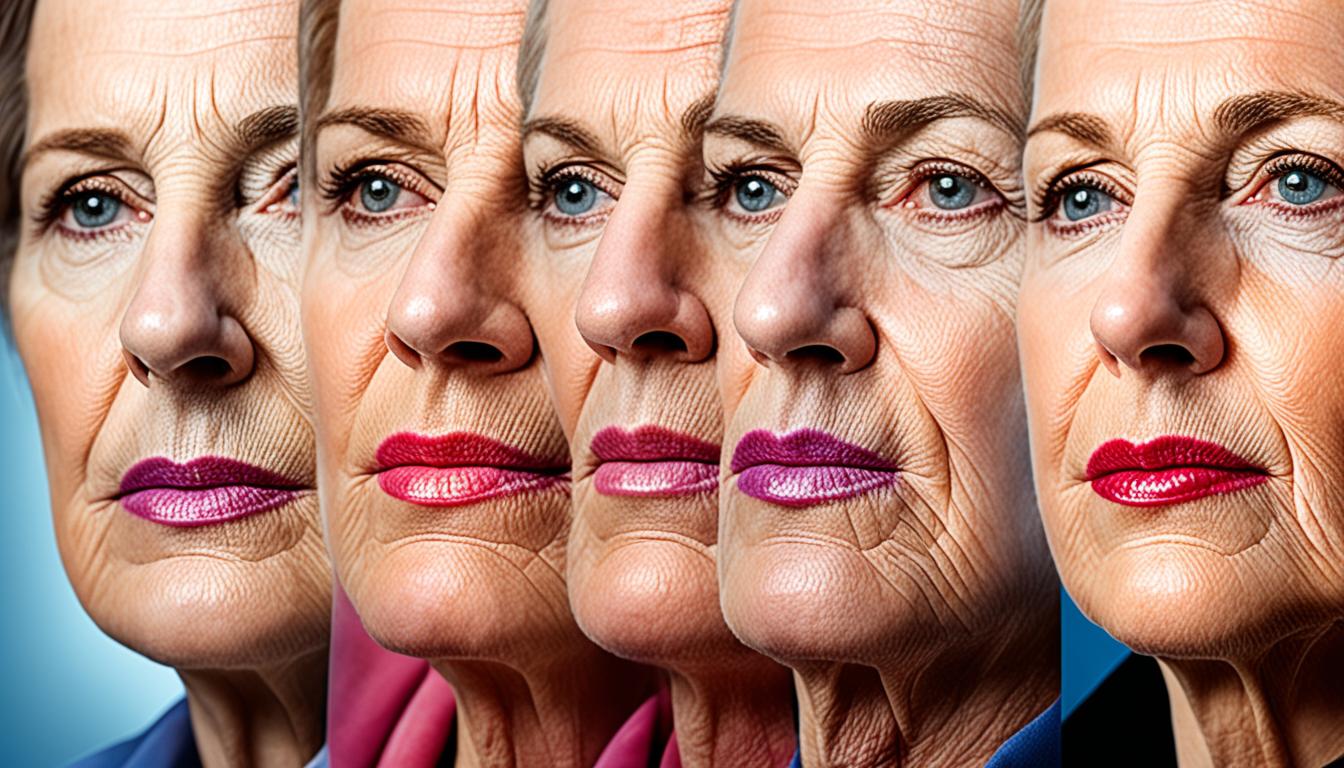Lip cancer affects the lips and mouth, starting in the mouth’s mucosa. It targets the squamous cells of the skin’s epidermis. Initial signs include sores or lumps in the mouth. Symptoms can also be bleeding, crusty spots, or swelling on the lips.
Several factors increase the risk of lip cancer. Men between 50 and 60 years old face higher dangers. Lifestyle choices like tobacco and alcohol, too much sun without protection, and certain genetic disorders can also raise the risk.
To confirm lip cancer, a doctor uses a physical exam, biopsy, and possibly other tests. The diagnosis is critical in deciding the best treatment. Common therapies are surgery and radiation. But, scientists are exploring stem cell therapy as a novel approach to combat this disease.
Key Takeaways:
- Lip cancer starts in the lips and mouth, particularly in the squamous cells of the epidermis.
- Early signs are sores or lumps in the mouth or on the lips.
- Men aged 50-60 and specific lifestyles or genetic issues increase the risk.
- Diagnosis requires a physical exam, biopsy, and imaging tests.
- Standard treatments are surgery and radiation, with ongoing interest in stem cell therapy.
Lip Cancer Prevention and Risk Factors
To lower the risk of lip cancer, know the prevention steps and risk factors. Lifestyle choices and the environment can up your chances. These include using tobacco and alcohol, too much sunlight, and some genetic issues.
Tobacco and Alcohol Use: Smoking and chewing tobacco greatly increase lip cancer risk. Drinking a lot of alcohol also adds to it. By quitting tobacco and cutting back on drinking, you can make a big difference.
Unprotected Sun Exposure: Spending a lot of time in the sun without protection is bad for your lips. It can lead to lip cancer. Protect your lips by using SPF lip balm, wearing hats, and staying out of the sun when it’s strongest.
Certain Genetic Conditions: Some genetic issues make you more likely to get lip cancer. Seeing a doctor regularly can help. They can check for these risks and help you take action early.
Take steps to prevent lip cancer and keep your mouth healthy. Not only does this cut your lip cancer risk, but it helps with other mouth cancers, too.
Prevention Tips for Lip Cancer:
- Use lip balms with SPF and regularly apply to protect the lips from sun damage.
- Wear wide-brimmed hats or caps to shield the lips from direct sunlight.
- Avoid excessive exposure to sunlight, especially during peak hours.
- Quit tobacco use, including smoking cigarettes and chewing tobacco.
- Limit alcohol consumption to reduce the risk of lip cancer.
- Maintain regular dental check-ups to monitor oral health and identify any potential issues early on.
Lip Cancer Diagnosis and Outlook
Lip cancer is diagnosed through a detailed exam by a doctor or dentist. They will also look at your medical history. Tests like exfoliative cytology, biopsy, and imaging are used. These tests show if you have lip cancer and how much.
Their findings help place the cancer in stages. Stages are based on the tumor’s size, depth, and if it spread. Knowing the stage guides treatment and predictions for recovery.
The outlook for lip cancer is good, with a 91% chance of surviving five years. Finding it early is key to beating it. Seeing your doctor regularly after treatment is vital to keep an eye out for its return.
If your lips or mouth change in strange ways, like not healing, see a doctor right away. Quick diagnosis and treatment are crucial for beating lip cancer.

